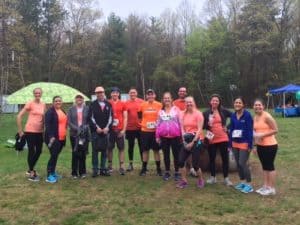A recent Pharmacy Practice News article ran with the jarring headline: “Killing the Kidneys to Save the Patient.”1 It drives at an issue facing many hospitals today: widespread use of antibiotics are at times negatively impacting kidney function – because hospitals have such limited data, they struggle to make timely appropriate antibiotic therapy choices.
For millions of patients at risk of sepsis each year, the standard of care is to turn immediately to broad empiric antimicrobial therapy when a patient is suspected of a sepsis-related infection: dose patients with vancomycin and piperacillin-tazobactam, or a similarly broad-spectrum coverage. This is a pre-emptive strike while they wait for a diagnostic result that can identify the causative pathogen of the bloodstream infection – or if there is an infection at all. In fact, over 50% of the time, there is no infection at all! “Vanc” and “pip/tazo,” for example, are relatively cheap and effective – and necessary for a patient’s survival if they have a gram-positive infection like MRSA or a gram-negative bacteria like Pseudomonas aeruginosa or E. coli. When the mortality rate for sepsis rises ~8% each hour the patient goes untreated, the results of undertreatment are devastating.2 So this practice is the right thing to do, but it has consequences.
Kidneys are often paying the price. Broad-spectrum empiric therapy can cause nephrotoxicity or acute kidney injury in patients. Acute kidney injury causes excess waste products in blood and makes it challenging for kidneys to maintain the right balance of fluid in the body, and may negatively affect other organs. Some patients may be required to go on dialysis to help replace kidney function. A recent study demonstrated that vancomycin plus piperacillin-tazobactam increases the odds of acute kidney injury by threefold, and acute kidney injury increases hospital length of stay by approximately 3.5 days and costs by $7,500.3
Enter the heroes!
Every day, antimicrobial stewardship teams face pressure to safely de-escalate or discontinue broad-spectrum antibiotics when they are not needed. How can you convince clinicians that it is safe to change therapy without any diagnostics to guide the decision… because conventional blood culture results take days?
In part to reduce harm to the kidneys, hospitals and stewardship teams are turning to new, faster diagnostics like the FDA-cleared T2Bacteria® Panel. This test provides direct-from-whole-blood infection identification in 3 to 5 hours, without the wait of blood culture.
As described in a new white paper from Lee Health, T2Bacteria is a useful tool to support five antimicrobial stewardship goals including optimizing empiric therapy within hours.4 T2Bacteria research results demonstrate the panel can help rule out of P. aeruginosa and/or S. aureus within hours.
Don’t miss the two detailed case studies where therapy could have been narrowed and optimized days sooner, saving money and reducing the risk of adverse side effects – including the potential to reduce acute kidney injury.
 spiked blood sample.
spiked blood sample.  Mary Millard
Mary Millard Emily Edwards
Emily Edwards